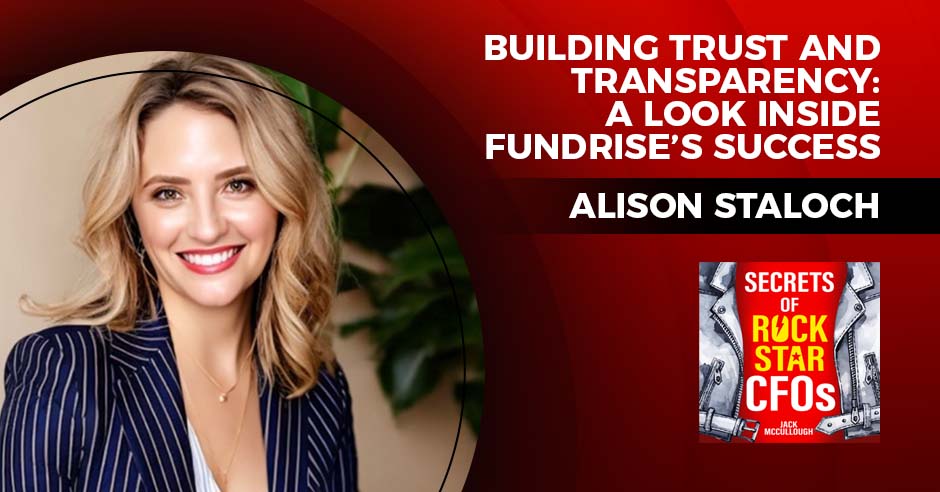In my 34 years of teaching graduate students and executives at MIT, I have stayed in touch with hundreds of former students. Every week, I receive several emails from alumni of my courses. During the past 30-plus years, I have only received one email asking for an equation (the former student was writing an article, and I was happy to help.) Instead, most were asking me, in so many words:
“I know what we should do, but I can’t get people to do it. What should I do?”
I make this a prime focal point of my courses. In fact, I almost always start the first session of my advanced graduate courses by asking the class, “What do you think is the objective of this course?” After an engaging discussion, I offer this answer, “My most important objective is to teach you to be an effective manager, which, of course, requires that you understand the field, but importantly, goes far beyond this simple objective to systematically address how to conceptualize and manage major change.”
For example, I often teach a very complex case on sizing a diesel oil tank at a major railroad’s fuel depot in Utah. The students come to class with complicated calculations expecting to see a blackboard full of equations. Instead, I ask them an unexpected question, “What is the problem in this case?”
The answers start with puzzled looks followed by: “The problem is how big should the tank be,” and eventually evolve to “what is the optimum design of the railroad’s entire interlinked fueling system?” The difference is enormous: the former question invites a local optimization involving supply and demand variance at the depot; the latter requires an integrated global optimization of the company’s whole fueling system.
Seen in that light, it becomes clear that the railroad’s fueling depots were originally sited in the long-gone era of steam engines, when frequent stops were needed for water and coal. In today’s age of efficient diesel engines, computers, and wireless communications, the whole system requires a fundamental reconceptualization.
Importantly, the more complex the required calculations in the tactical single-site problem, the less likely the students would be to see that they were actually solving the wrong problem. The correct answer in the specific case problem at hand is that the fuel depot in question, as well as many others, is no longer needed at all. This is critical because tuning up tactical calculations might produce 5–10 percent efficiency gains, while reconfiguring a whole system often produces gains of 30 percent or more.
My advice to the class is: don’t focus on tuning up your tactics; instead concentrate on “hunting big game.” How to do this? I tell them to “take a walk by the river” when they get an assignment (MIT is on the Charles River) and take the time to think about the real problem. After all, it doesn’t take any longer to solve a really important problem than a minor tactical one—and, ironically, a really big solution may well be much easier to implement than a minor one. This takes discipline, however, because the optimal workload for busy managers and executives is often 120 percent of your capacity or more, so it is almost irresistibly tempting to quickly get to work on the most obvious problem at hand, or on problems for which you already have a partial analysis.
But managing paradigmatic change requires a very different process than does developing smaller-scale tactical change.
Managing Paradigmatic Change
I am often asked by students and executives for my recommendation on the best book on change management. My answer is always The Structure of Scientific Revolutions by the late Thomas Kuhn, which is not a business book at all, but is so insightful and useful that I reread it at least once a year.
In this terrific book, Kuhn analyzes seminal breakthroughs in the history of science that completely changed their respective fields. What he found was amazing—none of them resulted from the so-called “scientific method,” which is widely taught in schools. The scientific method features a model of communities of scientists working on common problems by systematically doing experiments and incrementally building knowledge.
Kuhn found instead that major scientific breakthroughs occurred through a completely different process. He determined that progress in science was comprised of two fundamentally different phases. Typically, communities of scientists worked for years in the context of a broad explanatory paradigm like Newtonian physics. In this phase, they were doing “normal science” by building theories to explain and extend the prevailing paradigm, and by developing experiments to measure and refine the paradigm.
Over time, more and more experiments “failed,” in the sense that their results were not consistent with the predictions of the prevailing paradigm (he called these “anomalies.”) What happened? The scientific community did not adjust the underlying paradigm, but instead, ignored or rejected the invalidating results and ostracized the seemingly errant scientists.
This perplexing process continued, often for years, until a particularly insightful scientist (like Copernicus, Pasteur, Darwin, and Einstein) specified a comprehensive new paradigm that explained everything that the old paradigm explained as well as all of the anomalies. Even at that point, the governing paradigm did not shift! Rather, some scientists within the community began to migrate to the new paradigm, while most others continued to reject the change.
In other words, scientific progress throughout history was not characterized by the tidy linear process of doing experiments and incorporating results as we were taught in school. Instead, it proceeded in lurches from one paradigm to the next, with the actual change process determined more by politics than by logic.
Paradigmatic Change in Business
In my experience, Kuhn’s change process in science parallels closely the actual change process in business. Most business activities in a company occur within a prevailing set of strategic and operational paradigms— “the way we do things” —that get embedded in the culture and expressed through a company’s behavioral drivers like resource allocation, budgeting, compensation, and hiring and promotion. In this context, the company primarily moves forward through tactical improvements.
The problem is that over time the company’s external environment changes in a fundamental way that invalidates the usefulness of the company’s prevailing paradigm. What happens? Most often the need for fundamental change is ignored, and the company’s results increasingly falter as the company’s managers double down on tactical improvements to the old business paradigm.
As an example, several years ago, important research was developed on capital budgeting. Capital budgeting is the process of judging potential investments by comparing an investment’s projected results to its projected cost. Surprisingly, the key finding was that managers consistently framed certain important, but hard to estimate (e.g. terminal value 20 years in the future), cost and benefit projections so they fulfilled their prior expectations of the project’s results.
If you compare the Fortune 100 list from 50 years ago with today’s list, you will see that most of the highly successful companies from 50 years ago have slid or failed, while most of today’s great success stories did not exist 50 years ago. Over time, the biggest problem in business is that companies’ strategies and operational processes do not change as their environment changes, but instead ossify and freeze the company in place.
Four Steps to Paradigmatic Change
How can a manager overcome these stubborn change-resistant forces, and systematically create paradigmatic change either company-wide or within a department? Here are four key steps that produce strong results:
- Take a walk by the river. When you are given an assignment, the critical first step is to refrain from immediately commencing analysis, but rather, to take the time (often overnight) to think carefully and creatively about whether you were given the right problem—or whether a different formulation would be more productive.
- Consider the company’s history. If you want to know why most companies do things, it is because they were developed 5–10 years ago to address the company’s then-current situation—and, like Kuhn’s “normal science,” they were simply retained and refined since then. This understanding allows you to make explicit the argument that the process in question did, indeed, make sense in the past, but times have changed and that is why fundamental change is needed today. The old way of doing things is not really wrong; rather it is obsolete.
- Develop relationships before they are needed. Most major change initiatives require the participation of multiple managers from several organizational units. Yet all too many managers instinctually work largely alone or in a small team, then try to sell their change program to others. This is counterproductive. Instead, invest your time in developing in advance of need a web of relationships and trust with your counterparts throughout the organization (and key counterparts in your customer and supplier organizations).
In a change project, involve your counterparts from the start in specifying the project, analyzing the information, and presenting the results. This will enable them to develop a deep understanding of the need for change and the effectiveness of your proposed change program. Through this process your counterparts will develop a commitment to the outcome, which is much more effective than simply trying to convince them to buy in to your predetermined program. One very effective change manager observed, “If you want to go fast, work alone; if you want to go far, work with a team.” - Create showcase projects. Unless drastic measures are required, the most effective change course is to create “showcase” projects. A showcase is a relatively small project that enables you to learn by doing, working out the best new ways of doing things. It is best to develop a showcase with a very limited segment of the company or with a relatively small set of customers or suppliers. The showcase should take place where the conditions for change are most favorable, and not in a major segment which carries significant risk. A well-structured showcase not only enables you to develop the most effective ways of doing things, but importantly, provides a compelling demonstration for the entire company.
For example, a number of years ago, Baxter pioneered one of the most effective vendor-managed inventory systems. Early on, the Baxter team chose to work with a relatively small community hospital in Mississauga, Ontario (just outside of Toronto). This was a new hospital without previous systems, and with an eager, capable new CEO and management team. Once a working model was developed, this hospital became one of the most visited hospitals in North America, as Baxter managers and hospital executives came to learn about the new processes, talk to those actually involved, and to “kick the tires.”
Broad Application
This four-step change process is very effective and has broad application to each department in a company and to the company overall. The most important underlying need is to understand that the ongoing process of tactical, tune-up change parallels Kuhn’s “normal science,” where change is built up through small, incremental improvements to a pre-existing overarching business paradigm; while paradigmatic change, which yields huge long-lasting improvements, requires a completely different change process.
Think about it this way. At the end of any major business position, you will have perhaps two or three bullets on your resume to describe your most important accomplishments. Simply saying, “nothing went wrong on my watch” is not a good bullet. Instead, the most effective managers think carefully in advance about what two or three bulleted accomplishments they want to create, and then use the four key steps outlined above to systematically create the needed paradigmatic change. Their careers skyrocket, reflecting their companies’ accelerating effectiveness and long-term profit growth.








